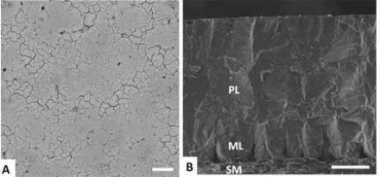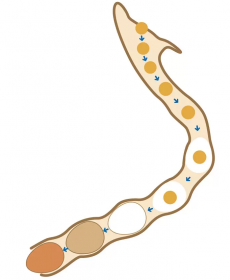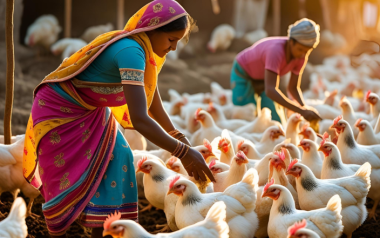Maintaining egg production and in particular eggshell quality through extended production cycles (until hens are 100 weeks old) is a very significant industry challenge, which can be achieved through selection programs genetically assisted and adequate hen nutrition during the laying period.
09 Jul 2021
Eggshell: structure, formation & what factors affect its quality
Content available at: Español (Spanish)The quality of the eggshell is of utmost importance to consumers. In particular, the quality of […]
Content available at:
Español (Spanish)
The quality of the eggshell is of utmost importance to consumers. In particular, the quality of the shell is a very important factor for the food safety of the egg, since if it is damaged or if it lacks a cuticle, the eggs are more susceptible to being contaminated by bacteria.
On the other hand, the laying of eggs and in particular the process of formation of the eggshell are very expensive processes for the hen’s organism. This causes the production of eggs and the quality of the eggshell to deteriorate with the age of the hens during the intensive laying period.
Sustainable food production is one of the most important challenges for our society in the context of constant global population growth. Eggs are one of the most complete, important, and cheap foods in our diet, rich in proteins, vitamins, and fatty acids. However, the poor quality of the eggshell is a major risk for egg food safety, as eggs with a damaged shell are more easily contaminated with bacteria (Salmonella) (Travel et al., 2011).
In this article, we will describe in detail the structure of the shell, its formation and what factors determine its quality, and how it can be improved.
The eggshell in detail …
The eggshell is a thin mineral layer (approximately 350 microns thick) that protects the egg contents against mechanical impacts, dehydration, and contamination by microorganisms (Nys et al., 1999; Hincke et al., 2012). This layer is perforated by numerous pores that allow the exchange of gases necessary for the embryo to breathe. It also supplies the calcium necessary for skeletal development.
The eggshell is made up of organic membranes, the mineral layer, and the cuticle that covers the outer surface of the shell (Figure 1).

Figure 1. Ultrastructure and microstructure of eggshell. Electron microscopy images of the outer surface of the eggshell with the cuticle (A) and the shell cross-section (B) .PL, ML and SM: palisade layer, mammillary layer, and membranes, respectively. The scale bar equals 100 microns.
Eggshell membranes are a network of collagen fibers (mainly type X), glycoproteins, and proteins. There is a thinner inner membrane located over the limiting membrane that surrounds the egg white, and a thicker outer membrane attached to the mammillary cones (inner part of the mineral layer). The thickest part of the mineral layer is made up of columnar crystals of calcite (calcium carbonate).
Finally, the outer surface of the eggshell is covered by the cuticle, a very thin organic layer (a few microns thick), which covers the pores, controlling the permeability of the shell and preventing the entry of bacteria through the shell (Muñoz et al., 2015). The cuticle contains proteins (lysozyme) and lipids with powerful antimicrobial activity.
Therefore, the cuticle, if present, is an effective barrier against the penetration of bacteria and is of great importance for the food safety of the egg. That is why European regulations do not allow the washing of eggs, since this practice can damage and even completely eliminate this protective layer.

EGGSHELL FORMATION
Laying hens have specific physiological adaptations for laying eggs (Nys and Le Roy, 2018). When hens reach sexual maturity,
TO CONTINUE READING REGISTER IT IS COMPLETELY FREE
Access to articles in PDF
Keep up to date with our newsletters
Receive the magazine for free in digital version
REGISTRATION
ACCESS
YOUR ACCOUNT
LOGIN
Lost your password?






































